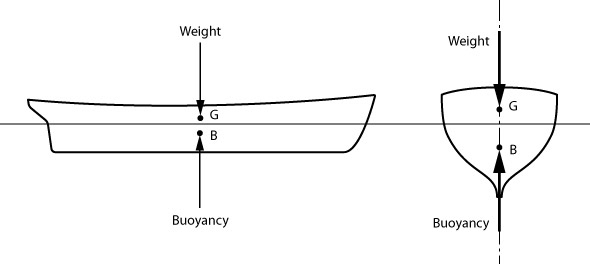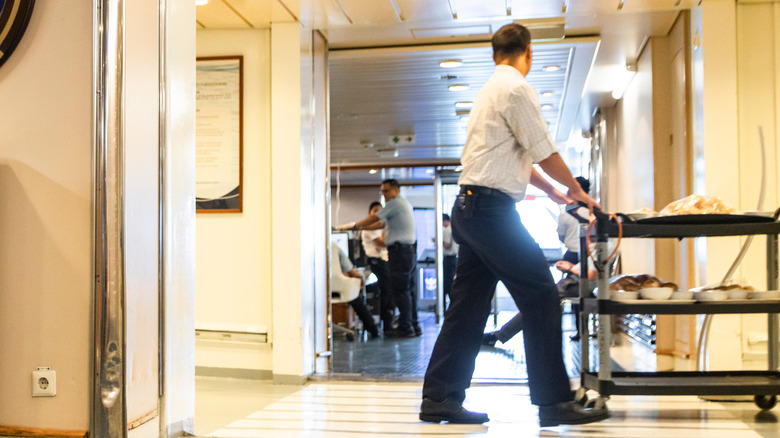Table Of Content
- Center of Gravity
- How Do Cruise Ships Float And Not Tip Over?
- Metacentric Height (GM): The Center Of Gravity In Cruise Ship Stability
- Watertight Compartments: The Key To Buoyancy And Stability
- Weight Distribution
- What are the chances of a cruise ship sinking?
- Why you should get your cruise cabin serviced in the evening instead of the morning

This incident also emphasized the need for cruise ships to have proper navigation equipment and to follow established routes in potentially hazardous areas. Your behavior on a cruise has more impact on safety than you might think. Acting responsibly and following the ship’s guidelines helps maintain a secure environment for everyone.
Center of Gravity
By adding or removing ballast water from specific tanks located in the lower parts of the ship, cruise crews can fine-tune the ship’s trim and maintain the desired balance. This is particularly important during loading and unloading operations when the distribution of cargo can affect the ship’s overall stability. These systems utilize electrically controlled gyroscopes to detect the rolling motion of the ship. When a rolling motion is detected, the gyro stabilizers generate an opposing force that acts against the rolling motion.

How Do Cruise Ships Float And Not Tip Over?
How many people can a cruise ship hold? Icon of the Seas just broke that record - Cruise Blog
How many people can a cruise ship hold? Icon of the Seas just broke that record.
Posted: Mon, 31 Oct 2022 07:00:00 GMT [source]
A cruise ship list is a highly unlikely event and happens very rarely. Today’s massive cruise ships are more equipped to withstand rough seas and high waves and have extensive safety measures and emergency systems to alert staff of potential issues. Crew members also train regularly on what to do in emergencies, including a ship listing.
Metacentric Height (GM): The Center Of Gravity In Cruise Ship Stability
The weight of the biggest cruise ships can equal the weight of 2000 Blue Whales piled on top of each other. One of the world’s largest cruise ship can transport almost 7000 passengers and more than 2000 crew members. Modern cruise ships are designed to maximize stability in all scenarios.
While cruise ships are designed to handle rough seas, modern stability control systems and stabilization technologies help reduce rolling motions and enhance passenger comfort even further. The stability of cruise ships is a meticulously planned and engineered feat, ensuring the safety, comfort, and enjoyment of passengers and crew members. It’s critical to emphasize that cruise ships are designed to be stable and handle adverse weather conditions.
Watertight Compartments: The Key To Buoyancy And Stability
At Least 9 People Went Overboard Off Cruise Ships in 2023 - Business Insider
At Least 9 People Went Overboard Off Cruise Ships in 2023.
Posted: Wed, 15 Nov 2023 08:00:00 GMT [source]
The combination of a wide hull, (known as “the water plane area”) low centre of gravity, fuel, and ballast tanks filled with water keeps a cruise ship from tipping over in rough seas. While ships of the past were always at risk of tipping over, modern cruise ships are designed to prevent them from tipping over. The cruise line industry’s number one priority is always the safety of the passengers on board and the integrity of the cruise ships they operate. Not only can a modern cruise ship roll to 60 degrees before it fully tips over, but it can also withstand waves that measure up to 50 feet in height! This is because cruise ships are designed to withstand the most extreme weather conditions imaginable. Weather conditions play a significant role in the stability and navigation of cruise ships.
These are the waves that can be twice as tall as others and come from any direction. They appear out of nowhere, and no one can predict when and where they will pop up. It’s a good thing Rogue waves are extremely rare, and chances that a cruise ship will meet one are really low. Ballast tanks are enormous water tanks held in the hull of a cruise ship.
What are the chances of a cruise ship sinking?
If the object’s density is less than the density of water, it will float. So, let them handle the situation to evacuate all the passengers. Most cruises sail without incident but know there’s always a backup plan.
By manipulating the trim, cruise ships can distribute weight and adjust the ship’s stability to adapt to changing conditions. Cruise ships carefully plan the placement of heavy components, such as engines, fuel tanks, and onboard amenities, to ensure an optimal center of gravity. By distributing heavy items across the ship, designers can prevent weight imbalances that could lead to instability. The lower the center of gravity, the better the ship’s stability against tipping during maneuvering or rough seas.
The blend of technology and design ensures that these vessels can face the vast oceans with confidence. This peek into their workings not only satisfies curiosity but also reassures us about the safety and ingenuity behind cruise travel. Every year, millions of people travel on cruises around the world, enjoying a wonderful vacation without incident. Cruise ships are very safe, the ship staff are trained extremely well to handle emergencies and the chance of something happening is slim.
Cruise ships are equipped with radar systems, satellites, and communications that provide real-time data, allowing for proactive adjustments to the ship’s heading and speed. Their ability to avoid the worst weather not only promotes comfort but also enhances overall safety. However, it’s important to understand that modern ships are designed with a low center of gravity and sophisticated ballast systems to counteract this tilting, returning them to an upright position.
On the other hand, many luxury and boutique cruise lines (like Azamara, Regent Seven Seas and Silversea) have no-tipping policies in place. In these cases, the staff gratuities are built directly into the all-inclusive fares, and their crewmembers are paid accordingly. At most lines, you can pay your service charges before sailing (at the same time you pay your cruise fare). Alternatively, you can have the charges added to your room bill on board. Cruise lines say they pass the money collected from service charges to the shipboard crew. They say the money is shared not just with front-of-house crew, such as room attendants and waitstaff, but also with behind-the-scenes workers.
Adopting such measures, today’s cruise industry strives to keep you safe on your seafaring adventures. It’s not just the wind but the way the water churns that can threaten stability. However, cruise lines monitor weather relentlessly to steer clear of such extremes. The mentioned incidents have emphasized the significance of implementing safety regulations and procedures in the cruise industry.
If the system detects any changes in the ship’s stability, an alarm will sound, and the crew will be alerted. This allows the crew to take action quickly, right the ship, and prevent further tipping. Cruise ship stability is achieved by evenly distributing public spaces and machinery, such as engines, fuel tanks, fresh and wastewater, and cargo throughout the ship. The ship’s center of gravity must be carefully calculated and positioned to ensure that the ship remains stable in all conditions. Understanding the design of a cruise ship will help calm any nerves you may have as a cruiser.
Read on for our tips on tipping, so you won't be lost at sea when it comes time to show your appreciation for the cruise crew. Daily service charges are not the only cruise tips you will pay on board. Many cruise lines will tack an automatic gratuity charge onto the bill for extra-fee drinks, restaurant meals and spa treatments. Cruise ships are surprisingly well prepared for all the bad weather one can expect out at sea.
So, next time when you’re aboard, find a spot closer to the water plane area to make your cruise even more enjoyable. So, when you’re looking out at the sea from one side of the ship, remember, there’s a whole underwater section keeping you afloat. So, in this blog, we’ll look at how these big ships stay on top of the water and why they don’t tip over. I have done some research work and talked to a few cruise engineers to base my hypothesis on solid grounds.

No comments:
Post a Comment